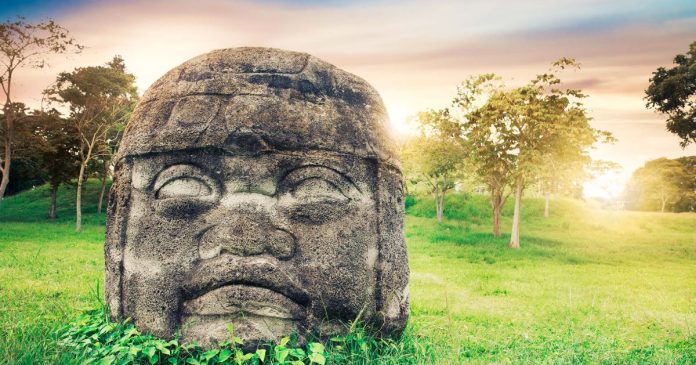The Olmec emerged along Mexico’s Gulf Coast around 1200 to 400 B.C. This ancient civilization is known for its monumental stone sculptures and intricate ceramics. Its cultural legacy influenced later Mesoamerican societies like the Maya and Aztecs. Genetic studies, artistic comparisons, and technological parallels suggest a connection between the Olmec and the Ma’lt peoples. These Paleolithic inhabitants of the Lake Baikal region lived approximately 19,000 to 23,000 years ago. Several lines of data make a strong connection they are the ancestors of the Olmec.
Ma’lt Peoples’ Ivory Artifacts in Siberia
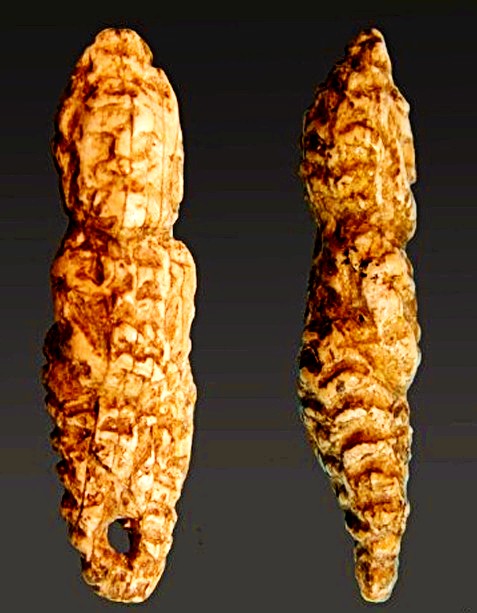
The Ma’lt peoples lived in the Lake Baikal region of Siberia during the Upper Paleolithic period. This period dates to around 19,000 to 23,000 years before present (BP). Archaeological excavations at sites like Ust-Kova uncovered mammoth ivory artifacts. These include personal ornaments and small sculptures. A 2020 study in Archaeological Research in Asia by Lbova et al. reveal a carved motif of a swaddled infant.
This small ivory figurine depicts a human form wrapped in bindings. It ranks among the earliest examples of representational art in Siberia. The figurine features intricate detailing and a stylized aesthetic.
The Ma’lt peoples, part of the Mal’ta–Buret’ culture, used advanced techniques to work with mammoth ivory. They employed methods like splitting and fine carving to create detailed motifs. These techniques indicate a deep cultural tradition. The Mal’ta–Buret’ culture produced portable art, typically carvings in ivory tusk or antler. This art spanned Western Europe into Northern and Central Asia. The Ma’lt also created bird sculptures depicting swans, geese, and ducks. Ethnographic analogies with 19th and 20th-century Siberian shamans suggest a shamanistic tradition. These ivory objects and associated burials reflect a rich spiritual life. This cultural foundation likely influenced descendants during migrations.
Artistic Similarities: Swaddled Infant Motifs
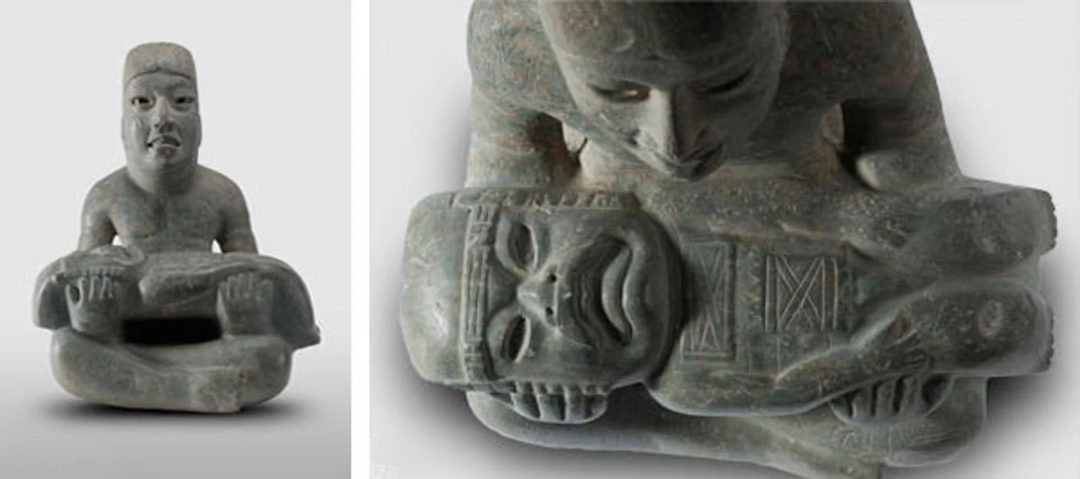
A clear similarity exists between the Ma’lt ivory figurine of a swaddled infant and certain Olmec sculptures. The Olmec produced numerous ceramic and stone figures, including infants wrapped in bindings. These figures were often used for ritual or symbolic purposes. They feature smooth, rounded forms and minimalistic facial features. The resemblance to the Ma’lt figurine is striking, despite the vast time and distance between the two cultures.
The Olmec figures, often made from fine white clay, were decorated with white slip and red pigment. A 2015 article from the Metropolitan Museum of Art notes that these sculptures, produced between 1200 and 800 B.C., are among the earliest examples of portraiture in the Americas. They share iconographic and stylistic characteristics with monumental sculptures from Olmec centers like San Lorenzo and La Venta. Wooden busts found nearby evoke similar expressions to the ceramic babies. The Ma’lt figurine dates to 19,000 to 23,000 years BP; the Olmec sculptures date to around 1200 to 400 B.C. But this shared motif suggests cultural continuity across generations and continents.
Stonework and Technological Traditions
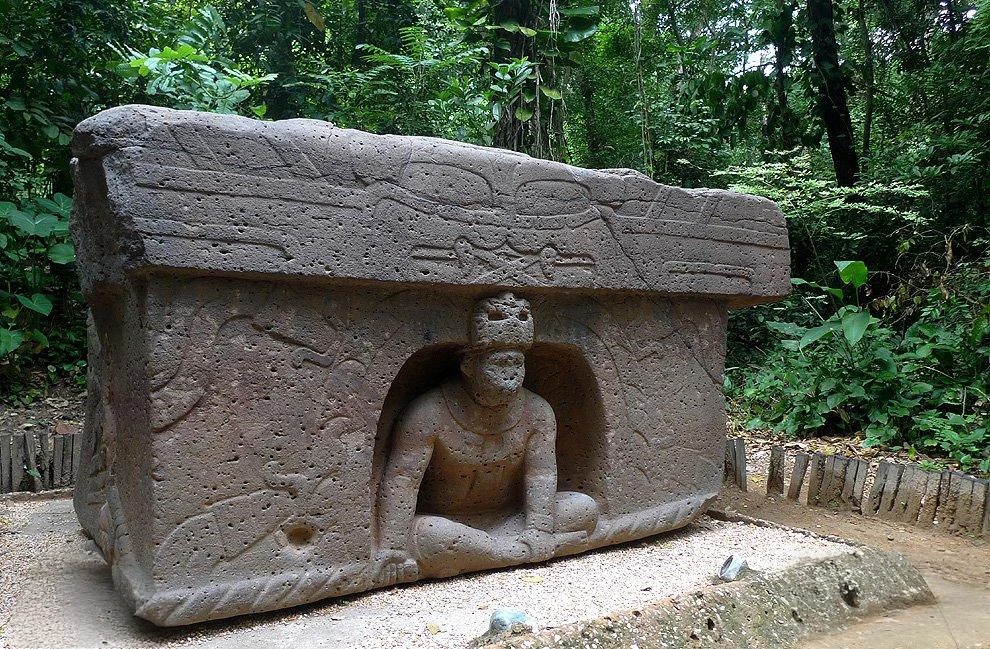
Technological traditions of the Ma’lt peoples and the Olmec show similarities, especially in working with hard materials. The 2020 study by Lbova et al. notes that the Ma’lt used stone tools to process mammoth ivory. They used techniques like splitting and flaking, also common in lithic tool production. These methods allowed for precise cuts, enabling detailed sculptures like the swaddled infant figurine.
The Olmec are well known for monumental stonework, including colossal heads and carved altars at sites like San Lorenzo and La Venta. La Venta, a key center from 900 to 400 B.C. features the largest Mesoamerican structure of its time. The Olmec worked with basalt, a hard volcanic rock, using flaking, pecking, and polishing to create smooth surfaces and detailed features. The technological principles, such as percussion and grinding, align with those of the Ma’lt peoples. The Ma’lt expertise in hard materials likely influenced later artistic traditions, including those of the Olmec.
Genetic Ties Linking the Olmec to Siberia
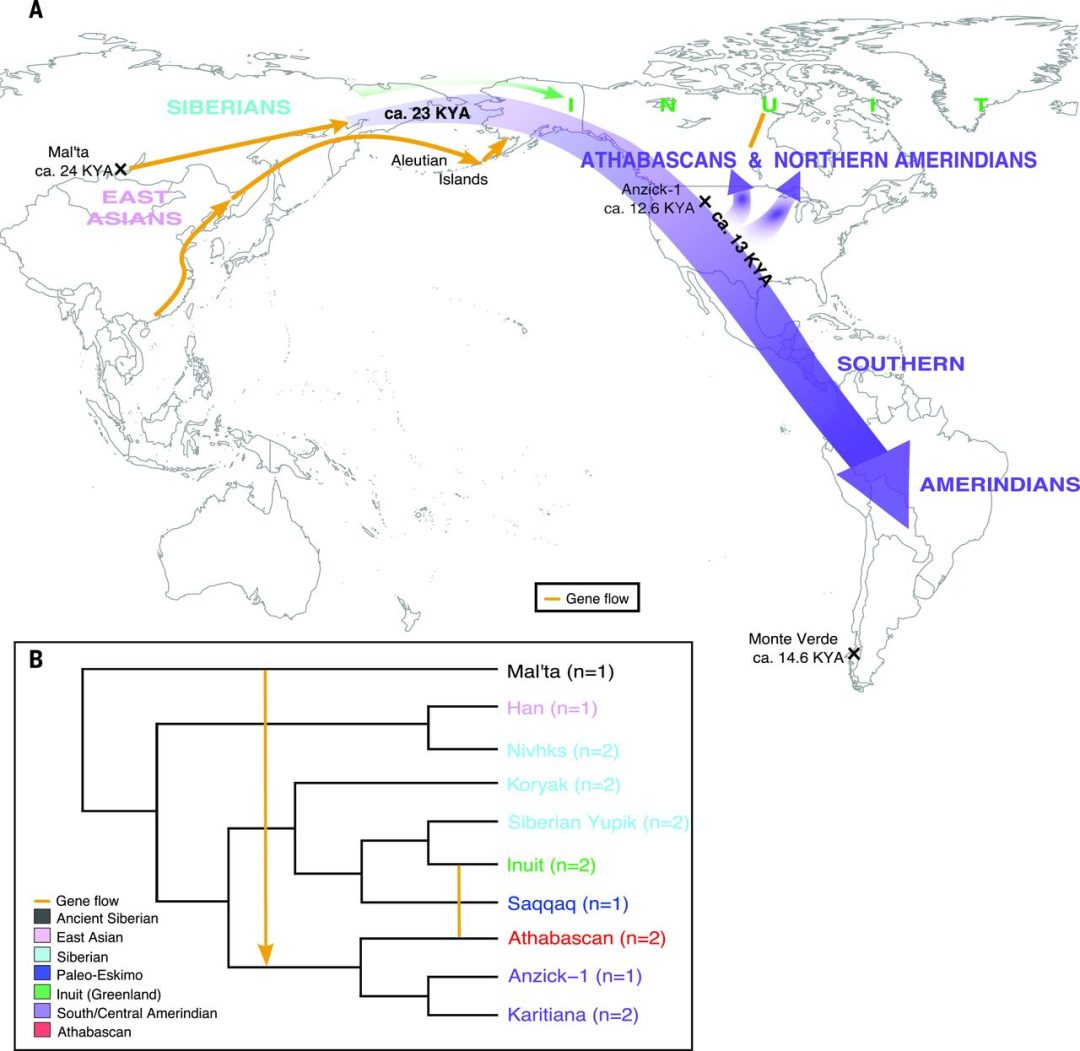
Genetic evidence connects ancient Siberian populations to the Indigenous peoples of the Americas. A 2015 study in Science by Raghavan et al. analyzed Native American genomic history. The study found that 14% to 38% of their ancestry traces back to the Altai-Baikal region of Siberia. Groups like the Ma’lt peoples were part of this population. They migrated across Beringia, the land bridge connecting Siberia and Alaska, during the late Pleistocene. This migration gave rise to the First Americans.
A 2019 study in Nature by Sikora et al. examined the DNA of a 10,000-year-old individual from northeastern Siberia. The results identified strong genetic ties to Native American populations. This finding reinforces Beringia’s role as a migration route. A 2021 study in Science Direct by Mao et al. details a deep East Asian lineage shared by ancient Siberians and Indigenous Americans. This lineage traces back to the Tianyuan man, a 40,000-year-old individual from East Asia. The Olmec, descendants of these early American populations, carry the genetic legacy of the Ma’lt peoples of Siberia.
Linguistic Connection
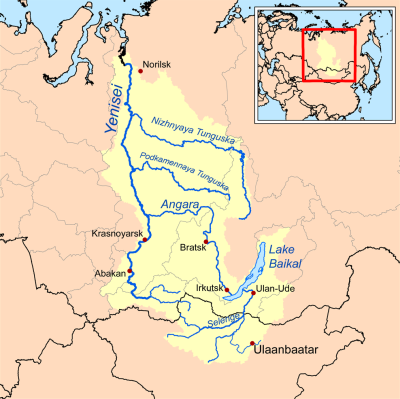
Linguistic studies connect the Indigenous peoples of the Americas to Siberia’s Yenisei River region near the Ma’lt peoples’ homeland. Edward J. Vajda’s 2010 research links the Ket language of Siberia to the Na-Dene languages of North America. The study identifies shared root words and grammatical patterns between Ket and languages like Tlingit and Athabascan.
This linguistic tie indicates cultural transmission across Beringia. Further supporting the connection between the Olmec, as descendants of the Ma’lt peoples of Siberia, and their ancient Siberian origins.
The Beringian Migration Pathway
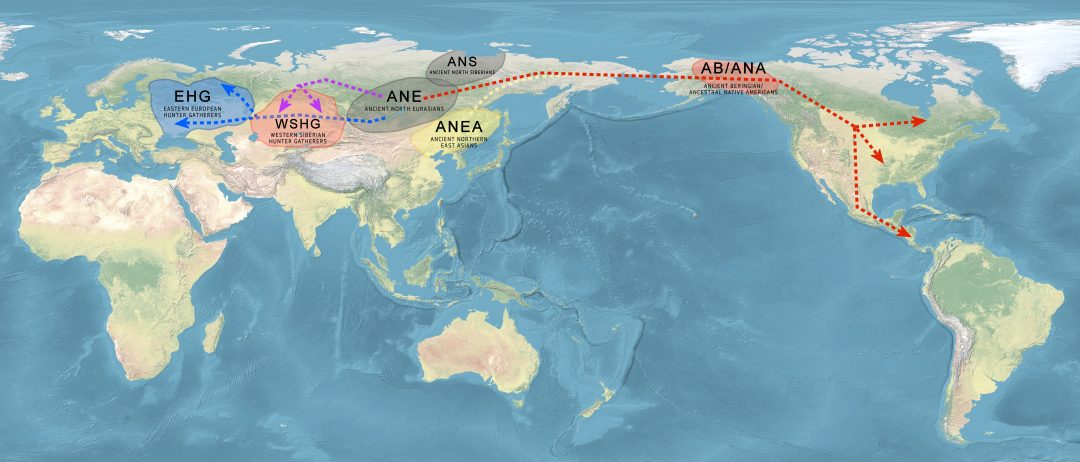
The Beringians, are a previously unknown group of Native Americans, discovered in 2018 at the Upward Sun River site in Alaska. Genetic analysis of a baby girl who died at the end of the last Ice Age revealed this group. The Beringians split from the ancestors of other Native Americans around 20,000 years ago. While the Beringians remained in the north, other groups moved south as ice caps thawed. These groups included the ancestors of the Olmec. They carried genetic and cultural legacies from Siberia, further supporting the connection between the Olmec and the Ma’lt peoples.
Conventional Views on Olmec Origins
Mainstream archaeology attributes the Olmec civilization’s rise to indigenous developments within the Americas. Pointing to environmental factors, such as the Gulf Coast’s rich ecological setting, playing a key role. The also connect early Mesoamerican societies as contributors. The beginnings of Olmec civilization, traditionally dated to 1400 to 1200 B.C., extend back to at least 1600 to 1500 B.C. The stick to these origin dates tying into early farming cultures of Tabasco, dating to 5100 to 4600 B.C., which shared food crops and technologies with the later Olmec.
Alternative Perspectives on Olmec Ancestry
Alternative ideas suggest African or other Old-World origins for the Olmec, often based on perceived similarities in physical features of the Olmec heads. Genetic studies, however, show that the earliest Americans, including the Olmec, had ancestry closer to ancient Paleo-Siberian populations.
Conclusion: A Cultural Bridge Across Continents
Genetic, artistic, technological, and linguistic evidence reveals a connection between the Ma’lt peoples of Siberia and the Olmec civilization. This link spans from Paleolithic Siberia to the Gulf Coast of ancient Mexico. The Ma’lt peoples’ carvings, genetic contributions, technological traditions, and linguistic ties provide a foundation for the Olmec’s cultural development.
The story of the Olmec, as descendants of the Ma’lt peoples of Siberia, is mine alone. Further research may confirm this hypothesis.
References
- Lbova, L., et al. “Mammoth ivory paleoart objects from the upper Paleolithic assemblage of Ust-Kova (eastern Siberia): A technological approach.” Archaeological Research in Asia, 2020.
- Raghavan, M., et al. “Genomic evidence for the Pleistocene and recent population history of Native Americans.” Science, 2015.
- Sikora, M., et al. “The population history of northeastern Siberia since the Pleistocene.” Nature, 2019.
- Mao, X., et al. “The deep population history of East Asia and the ancestry of modern humans.” Science Direct, 2021.
- “Olmec Babies as Early Portraiture in the Americas.” The Metropolitan Museum of Art, 2015.
- Moreno-Mayar, J., Potter, B., Vinner, L. et al. Terminal Pleistocene Alaskan genome reveals first founding population of Native Americans. Nature 553, 203–207 (2018)
- “How 30 years of research built a language bridge between Siberia and the native peoples of North America.” WWU News, Western Washington University, news.wwu.edu.

